Behind his tortoiseshell spectacles, Philippe Delhotal looks more like an artist than a watch brand executive. The 61-year-old creation and development director of Hermès Horloger is wearing a navy chore coat with a flamboyant silk scarf tucked into the collar. Above it, his greying facial hair has reached that bristly hinterland somewhere between 10-day stubble and tangible whiskers, while on his wrist he wears an Hermès HO8 with a rubber strap in blazing tangerine. Delhotal looks great, to be fair, and in everyday life there would be nothing particularly radical about his get-up. But I’ve just spent four days in Geneva at Watches and Wonders, the world’s biggest watch fair, interviewing a succession of brand CEOs and watchmakers dressed almost entirely in charcoal-hued suits and the most sober of ties. Within that staid context, Delhotal’s more expressive wardrobe is a breath of fresh air.
His brand’s watches speak their own design language, too. The big story for Hermès at the fair was the launch of a sports watch for women called The Cut, a clean geometric design consisting of a circular-shaped case with the sides lopped off and the crown moved to the 1.30 position to avoid disrupting the neat silhouette. The brand also showed its penchant for madcap whimsy with the Hermès Arceau Chorus Stellarum, a watch whose dial mixes champlevé enamel and lacquer to recreate a handpainted design from Japanese illustrator Daiske Nomura of a zombie cowboy (a cowgirl on the women’s version) riding a skeleton horse. Plus, Hermès delivered a technical showstopper with the Arceau Duc Attelé, a limited-edition piece featuring tourbillon and minute-repeater complications in a streamlined dial layout that feels startlingly modern.
“I was with a client just a while ago today and he absolutely wanted to buy the Arceau Duc Attelé, but there were none left,” Delhotal says with a shrug, speaking through an Hermès interpreter. “All 24 pieces have been sold. Fifteen years ago, that would’ve been unimaginable. In fact, if Hermès had even presented a watch like that, people wouldn’t have understood why.”
To appreciate why this was once the case you need to consider the evolution of modern watch culture. But as Delhotal points out, this landscape is shifting as a host of brands — such as Hermès — that developed their expertise in a non-horological arena are now injecting fresh creativity into the watch world. Along with the odd zombie cowboy for good measure.
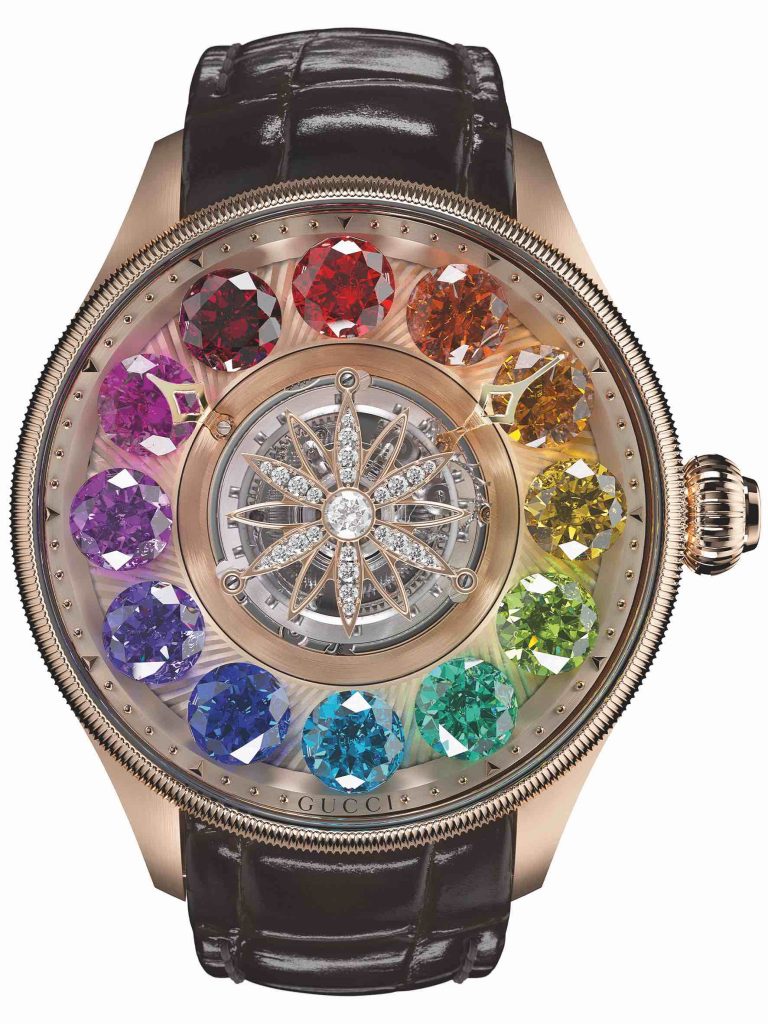
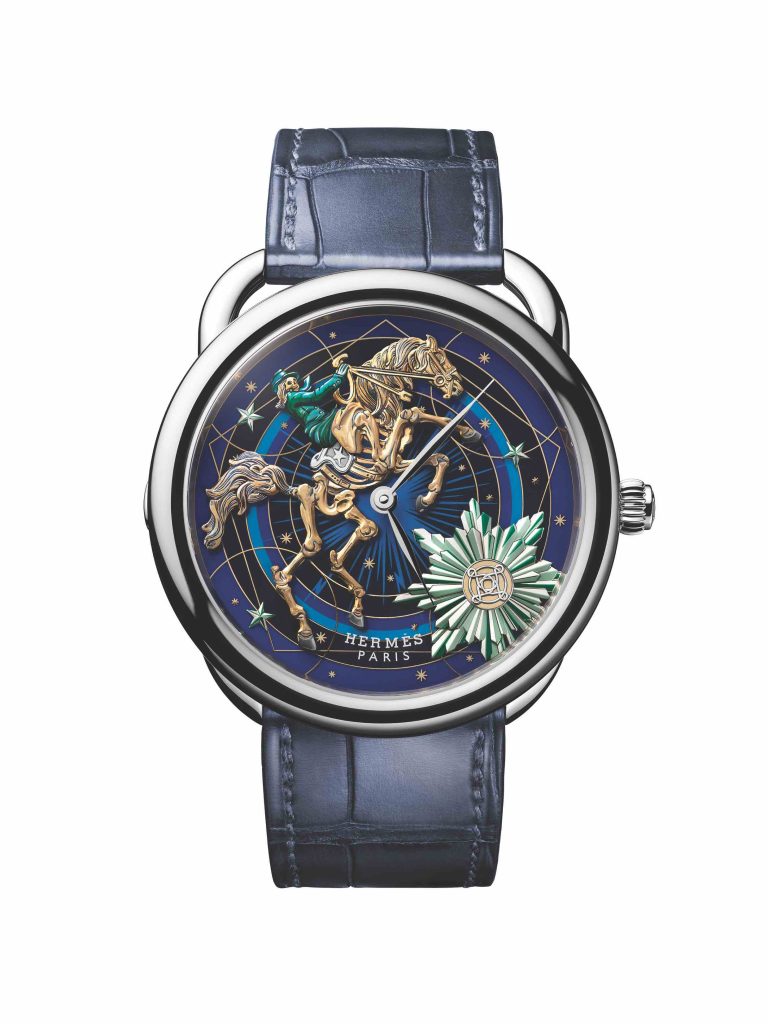
The old guard of watch brands have an enviably long history of making timepieces. Blancpain, widely regarded as the world’s oldest, has been in the game since 1735, while others like Vacheron Constantin (1755) and Breguet (1775) have similarly august pedigrees of which they are justly proud. This, after all, is a business where heritage is revered as a sign of brand know-how and craftsmanship.
Nevertheless, the fact that watchmaking can still prove such a lucrative business means there’s never been a shortage of bandwagon-jumpers. Brands that first made their name in the worlds of fashion, jewellery or leather goods have often tried to get a piece of the action. This is not a recent phenomenon. Back in the 1910s, Hermès was already partnering with Swiss manufactures such as Universal Genève and Jaeger-LeCoultre on co-branded timepieces, essentially piggybacking on the horological nous of established watch brands.
This trend accelerated in the 1980s. The arrival of quartz-battery technology in the preceding decade had effectively democratised the production of watches. Now that having a mechanical background wasn’t a prerequisite for making a watch, brands including Swatch, Fossil and Guess began to create timepieces that prioritised external appearance, leading to more outré and high-impact aesthetics. These new pieces were more affordable, and their keen prices encouraged people to buy multiple watches to match different looks. A watch was no longer a venerable timekeeping machine destined to become a family heirloom; instead, it was a fast-fashion accessory. In 1984 alone, Guess released five watch collections.
Soon, more distinguished fashion houses entered the fray and in 1987, Chanel launched its first watch, the Première. This was a watch deeply infused with the French brand’s DNA, its case emulating the stopper of its iconic No. 5 perfume, while the bracelet echoed the leather-and-chain strap of its famous quilted bag. In 1988, Louis Vuitton released its first two watches; Fendi followed suit months later.
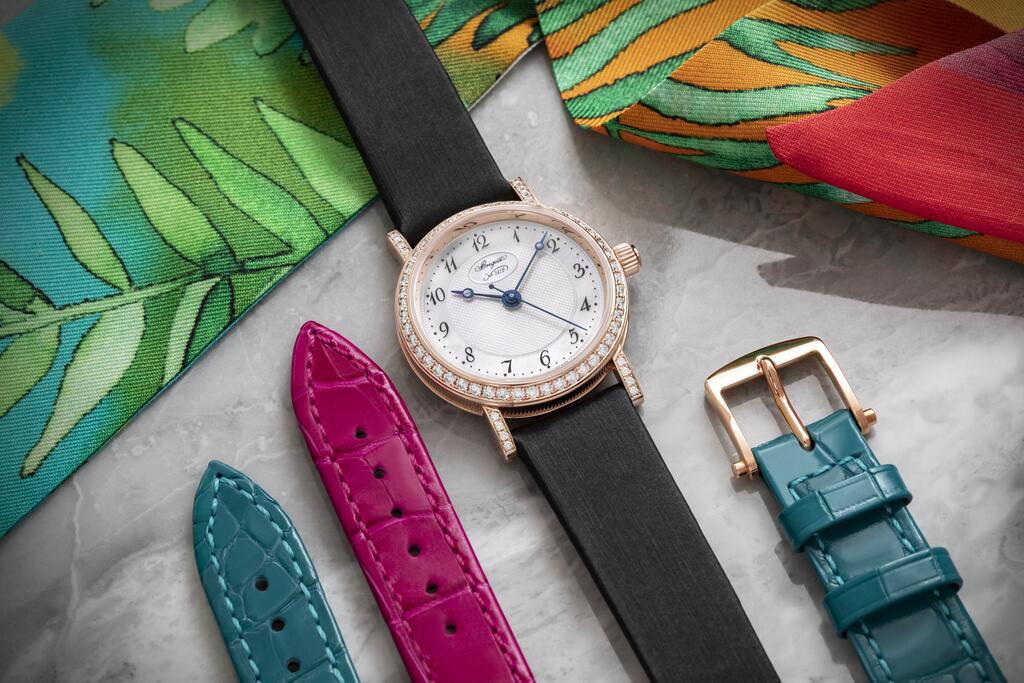

By the mid-’90s, the industry had become a free-for-all. Pretty much any recognisable fashion, sports or footwear brand, from Tommy Hilfiger to Adidas, signed a licensing deal with a watch company. Traditional watch brands were understandably miffed by what they saw as opportunistic forays onto their turf by companies lacking commitment to horological craftsmanship and technique. This was when the term “fashion watch” acquired its derogatory connotation. It signified a form of heavily branded style over substance primarily motivated by flashing dollar signs.
Gradually, however, a handful of these fashion brands and jewellery houses began to get serious about their watchmaking. They began to heavily invest to become true manufactures and produce their own movements in-house. In 1993, Chanel acquired the Swiss manufacture G&F Châtelain, giving the brand the technical scope to create its own timepieces from scratch, both inside and out. Other big guns soon began to do likewise. Louis Vuitton also bought its Swiss watch manufacturer, La Fabrique du Temps, while Gucci recently developed its own high watchmaking facilities, opening the Gucci Watch Lab in Cortaillod, Switzerland, after acquiring the Fabbrica Quadranti dial factory in Ticino.
As for Hermès’s evolution into a fine watchmaker, Delhotal believes the turning point was when it acquired a stake in Parmigiani Fleurier’s Vaucher movement manufacture in 2006. “The watchmaking legitimacy wasn’t there before that,” he admits. “We did very few mechanical watches before then. After that, we began developing our Métiers d’Art, our complications, our jewellery watches, and we succeeded in winning the interest of the public, the press of collectors.”
These investments by the so-called “fashion watch” brigade soon began to pay off with the release of a host of significant watches that won both critical and public acclaim. In 2000, for example, Chanel released the J12, a sporty unisex model with a ceramic case that has since become recognised as a modern design classic. The game-changing watch for Hermès, Delhotal suggests, was the 2011 release of Le Temps Suspendu, which featured a truly unique complication. Pushing a button prompted the hour and minute hands to snap to a narrow “V” at 12 o’clock, effectively removing the time display from the watch dial. In the background, however, the movement was still keeping time, so with another click you returned to the correct time. “It really changed the perception of us as a watchmaker,” Delhotal says. “We won Best Men’s watch at the Grand Prix d’Horlogerie de Genève. People realised Hermès were doing something interesting.”
Le Temps Suspendu approached watchmaking from a completely different angle. It was hard to imagine any of the traditional legacy brands dreaming up a playful high-end mechanical complication that literally stopped time. Herein lies the appeal of this second wave of serious fashion-watch brands such as Hermès, Chanel, Gucci and Louis Vuitton. Not only have they developed their horological chops, they’re now wielding them with a real sense of audacity and fun. “Why people like to come to Hermès is that we are different,” Delhotal says. “Yes, we do things that are serious, but we also try to do them with levity and lightness.”
Part of the reason for this liberated approach may be that these brands simply have a broader frame of reference than traditional watchmakers. By their nature, fashion houses are more likely to be led by the principle of good design rather than pure horology. In that respect, they perhaps have more in common with those slightly more established watch brands whose horological talents have grown out of their origins as world-class jewellers.
At this year’s Cartier booth at Watches and Wonders, for example, the house presented the Santos-Dumont Rewind, one of the most wilfully subversive watches at the fair. This platinum-cased watch purports to tell the time backwards. Read in a clockwise manner, the Roman numerals proceed on the dial from 12 to 11 to 10, and so on. In short, it turns the entire process of timekeeping on its head.
The new interpretation of the Classique Dame by Breguet makes an equally bold statement by enabling the wearer to change the straps as desired. “From now on, it will be as easy to change the style of your Classique 8068 watch as it is to slip on another pair of shoes,” says a Breguet spokesperson, adding it only takes a few seconds to switch from a black satin fabric strap to a colourful alligator leather strap in teal blue and Byzantium purple or peacock blue and raspberry pink.
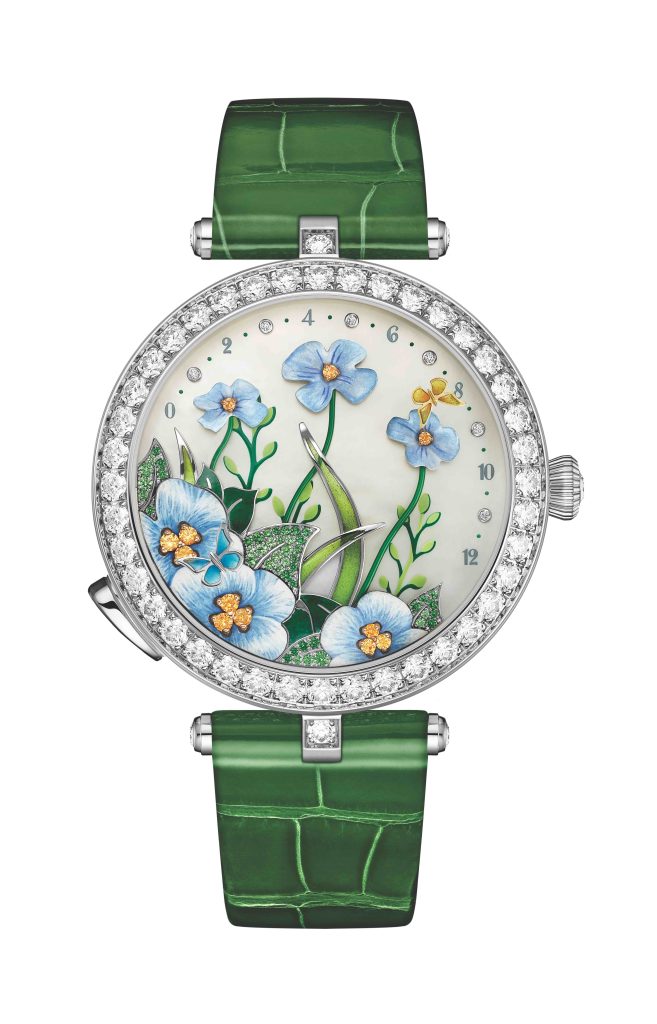

Van Cleef & Arpels is similarly unconcerned with playing by the usual rules, explains Jean Bienaymé, the brand’s international marketing and communication director. “We’re not just one more brand in the field of watches,” he insists. “We’re a high jeweller who love to tell stories and who know that thanks to a watch movement, we can bring life to new stories, whether that’s two lovers on a bridge or a ballerina becoming a butterfly.”
This more whimsical approach to what Van Cleef & Arpels has named its “Poetic Complications” range still requires extreme technical proficiency, it’s just employed in a way that’s wildly imaginative. Take one of the brand’s new releases, the Lady Arpels Brise d’Été, which took four years to develop. A pair of enamel butterflies serve as the hands that tell the time. At the touch of a button they take wing, while flowers gently sway as if stirred by a summer breeze.
Mere timekeeping, it seems, is too pedestrian an aim for the brand. “Our objective when it comes to watchmaking is to go beyond the original nature of the timepiece,” Bienaymé says. “What we love to do is create a precious object of fine craftsmanship that conveys a positive and poetic vision of life and of time.”




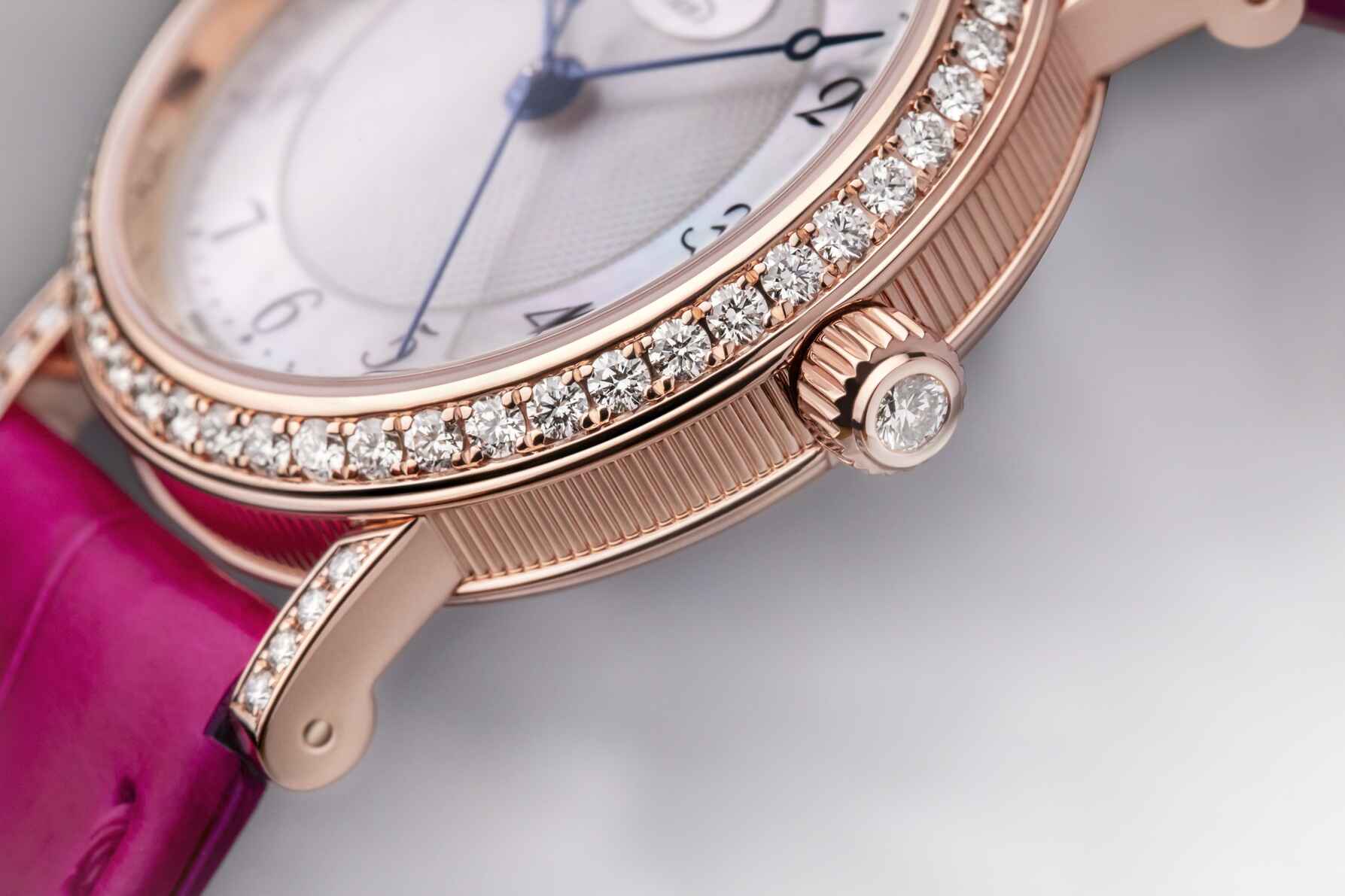 The new interpretation of Breguet's Classique Dame enables the wearer to change straps as desired.
The new interpretation of Breguet's Classique Dame enables the wearer to change straps as desired.